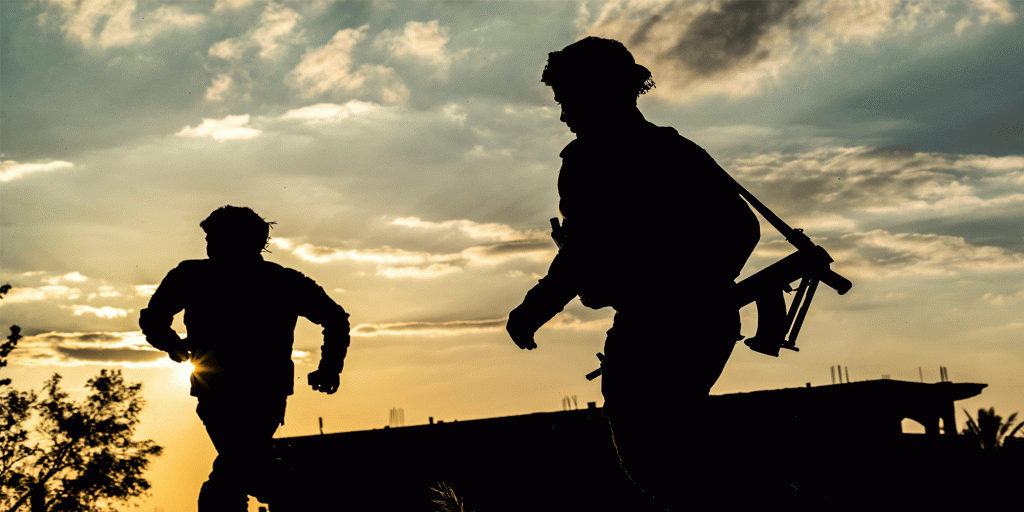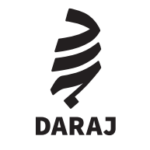I’m Mustafa Abdul-Baset Abdel-Samad Ahmed Al Ghanimi, a member of ISIS’s media staff. My suspicions of the Islamic State started showing in late 2015, when I was photographing one of its invasions of Ramadi City, and found my little brother, who was born in 1995, involved in the fighting, wearing a suicide vest. I asked him why he was wearing it. He replied saying that it was a precaution against being arrested.
Meanwhile, things were getting heated in the battlefield. ISIS fighters were trying to break into a building where government forces were stationed. While zooming in and getting closer to the crossfire emplacement, a large explosion occurred and the fighters cried out: “He did it!” They meant, my brother, the bomber. I took a picture of the explosion that was broadcast by ISIS and named “Azm al-Kamah 2.”
I was born in 1992, in Basrah, Iraq, a middle child to a family consisting of a father, two wives and 11 sons. We left Basrah in 2003, after the United States invaded Iraq. Our family had close ties to the former regime. My father was a clan leader and he was working in the government sector as a liaison officer. When my uncle was killed during the invasion, my father decided to move to Al-Fallujah, where we have acquaintances and relatives. Fallujah remained very loyal to Saddam Hussein’s regime, even after its fall.
Our family participated in the resistance against the American occupation. My older brother was killed in the first battle of Fallujah in 2004. He was fighting on the Jihadis’ side. My father was all for fighting until Isis came into the picture.
By then, we had already moved to Ramadi city, where many displaced families took refuge, as Al-Fallujah had turned into a perpetual war zone. The Islamic State had begun its activities, especially following Al-Qaeda’s defeat and the killing of Abu-Mus’ab al-Zarqawi. We, the young men, began receiving ISIS’s press releases, especially after the outset of the events in Syria.
In al-Bukamal, killing civilians became a daily routine, along with violations of Sharia Law.
I still remember the first video that lured me to the Islamic State. It showed members of the organization slaughtering Christian Syrian pilots and was named “For the Hatred of Non-believers.” That tape made me realize the importance of media in this war, and afterwards I decided to be a media staff member. At that time, we were filled with feelings of humiliation and defeat, and these tapes revived the spirit of victory in us.
Sunni cities began to rebel against the government. Everyone participated in sit-ins in squares, including ISIS elements, who found a chance to bear down on everyone. Government forces did ISIS a great service when they opened fire on protesters. It led many to take up arms and confront the army.
At the beginning, sit-ins were political. The most important one was held after Rafi’ Al-Issawi’s companions were arrested. I was in charge of photographing it. ISIS used the chaos that prevailed to take control of the southern section of Ramadi where I was appointed as a press attache.
I was responsible for distributing Al-Naba magazine and releases, and editing content for the giant street billboard screen, which played battle scenes in Syria. ISIS was fully cognizant of the impact of the tapes they were releasing, and their capacity to charge people emotionally.
We were a group of defeated young men. We found in the uprising a chance we had long been looking forward to.
For the record, whole families took part in the fighting.

The media played a key role in the ISIS’s wars. Media professionals had a unique position. They sent me to Mosul which was under the ISIS’s control. There, I attended an information workshop that offered photography sessions as well as knowledge on uploading content onto computers, providing medical services, and finally Islamic lessons.
It was then that the battle took place in which my little brother carried out a suicide bombing. Even though I felt so sorry for him back then, I was still not convinced of leaving ISIS.
All my brothers were members of ISIS and they all were killed except for one who remained in al-Baghouz. I have no idea what happened to him there.
As for myself, I left Syria as soon as the cities started to fall under the control of the army and the Popular Mobilization Forces in 2017. I left with my mother, my two wives and children.
I arrived in al-Bukamal city where ISIS placed me in jail for my lack of commitment. That is when I became suspicious of the organization.
In al-Bukamal, killing civilians became a daily routine, along with violations of Sharia Law. Excommunication (takfir) was done by fatwas (religious ruling) of Ahmad ibn-Hanbal, Ibn-Taymiyyah and Muhammad ibn Abdul-Wahhab.
I tried to flee to Turkey, but on the way, the Syrian Democratic Forces arrested me and handed me over to Iraqi Intelligence.
And now, here I am on trial, while my mother and wives and children are held at the al-Hol isolation camp in Syria.






